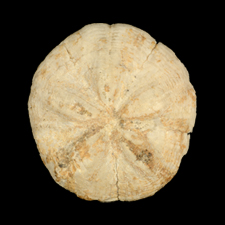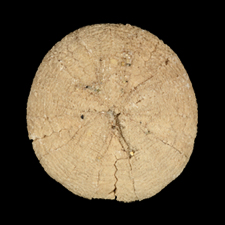Santa Margarita Formation
The Santa Margarita Formation is exposed in the western Santa Cruz Mountains of central and southern California (San Luis Obispo, Santa Barbara, and Ventura counties). The strata are relatively unfaulted, with good exposures, and abundant fossils. The unit conformably (with no gaps in geological time) overlies the Monterey Formation (Middle Miocene) and is in turn unconformably (with a gap in geologic time) overlain by Pliocene strata. In most areas the Santa Margarita Formation comprises coarse-grained sandstone and siltstone, with some mudstone. The unit is Late Miocene to Early Pliocene in age on the basis of molluscan and foraminiferal biostratigraphy. The Santa Margarita Formation accumulated in a tidal-dominated shallow subtidal to outer shelf (<5-100 m of water depth) environment, with strong currents, and minimum water temperates of approximately 18°C.
Common fossils
Relevant literature
Durham, J.W. (1955). Classification of the clypeasteroid echinoids. University of California Publications in Geological Sciences, 31 (4), p. 73-198.
Hall, C. A. (1960). Evolution of the Echinoid Genus Astrodapsis. University of California Publications in Geological Sciences, 40 (2), p. 47-180.
Phillips, R. L. (1983). Late Miocene tidal shelf sedimentation, Santa Cruz Mountains, California. In D.K. La Rue and R.J. Steel (eds.). Cenozoic Marine Sedimentation, Pacific Margin, U.S.A. Society of Economic Paleontologists and Mineralogists, Pacific Section, Proceedings, p. 45–61. Los Angeles, California.






